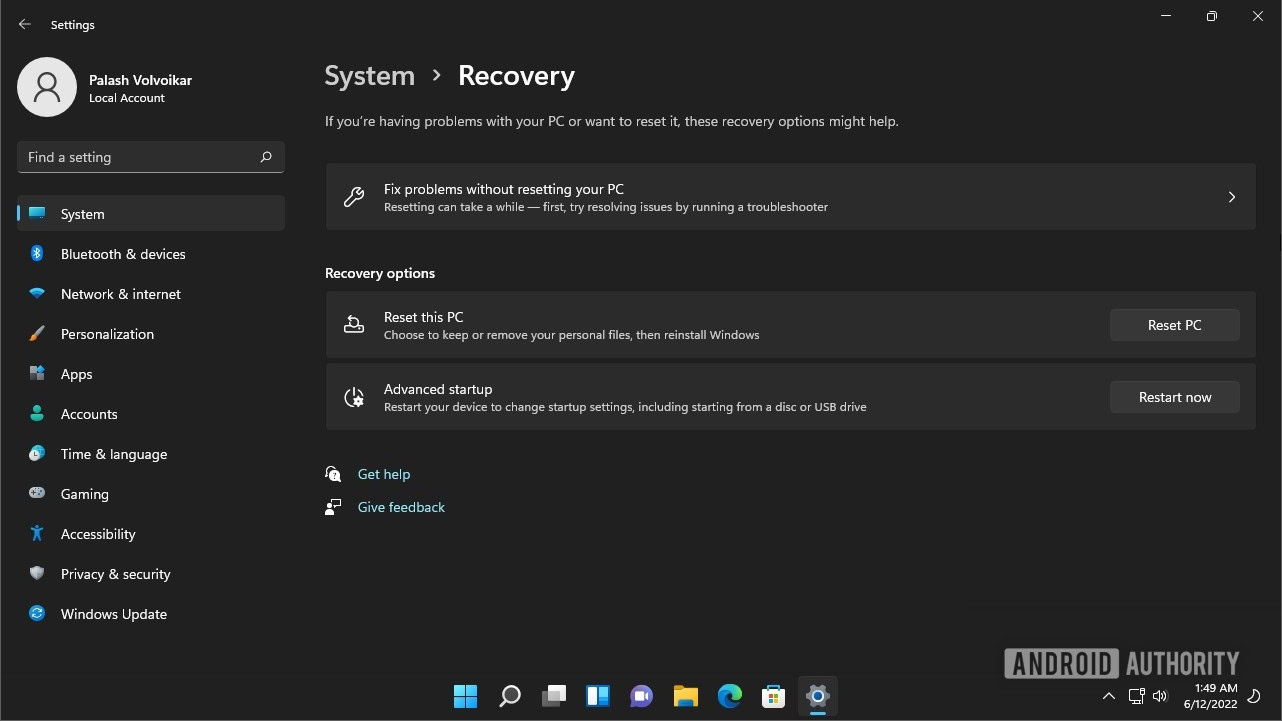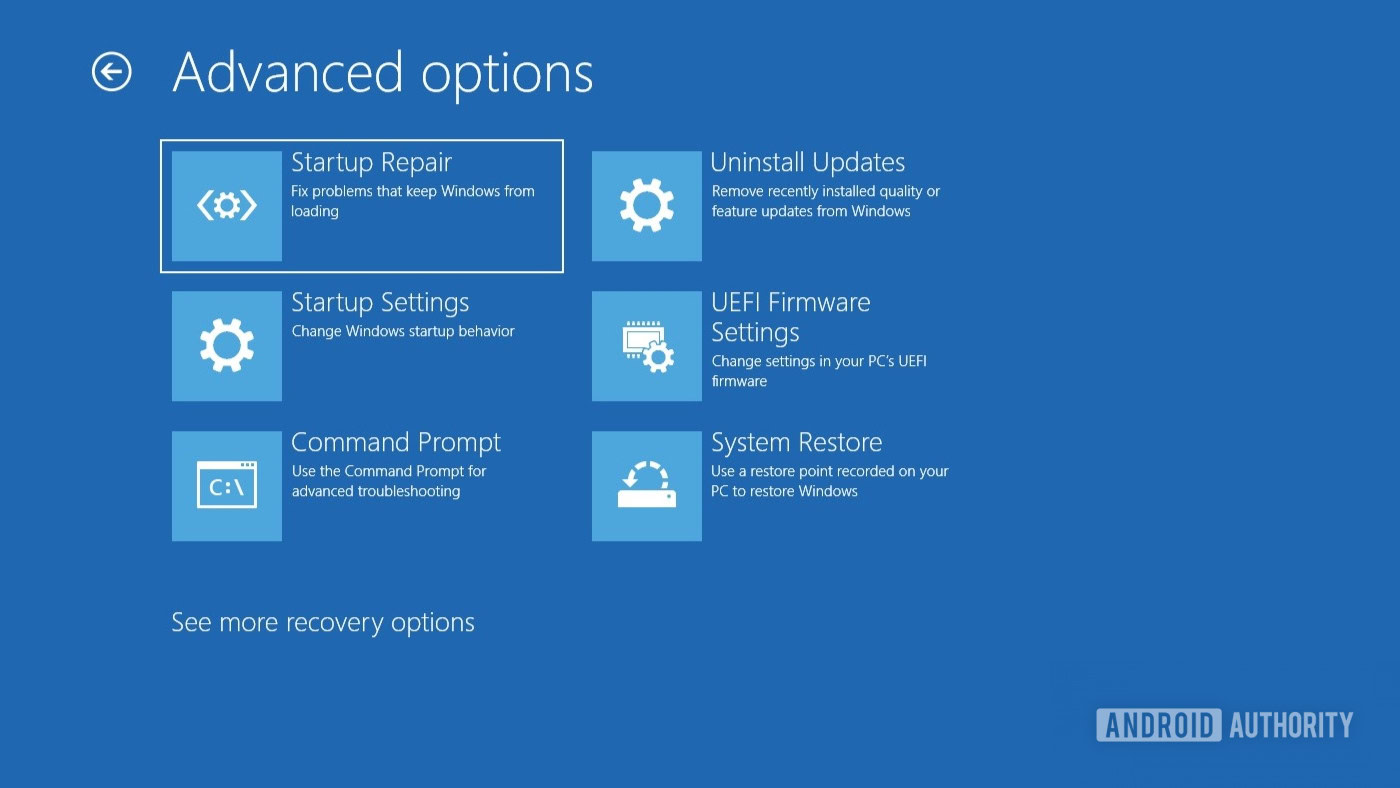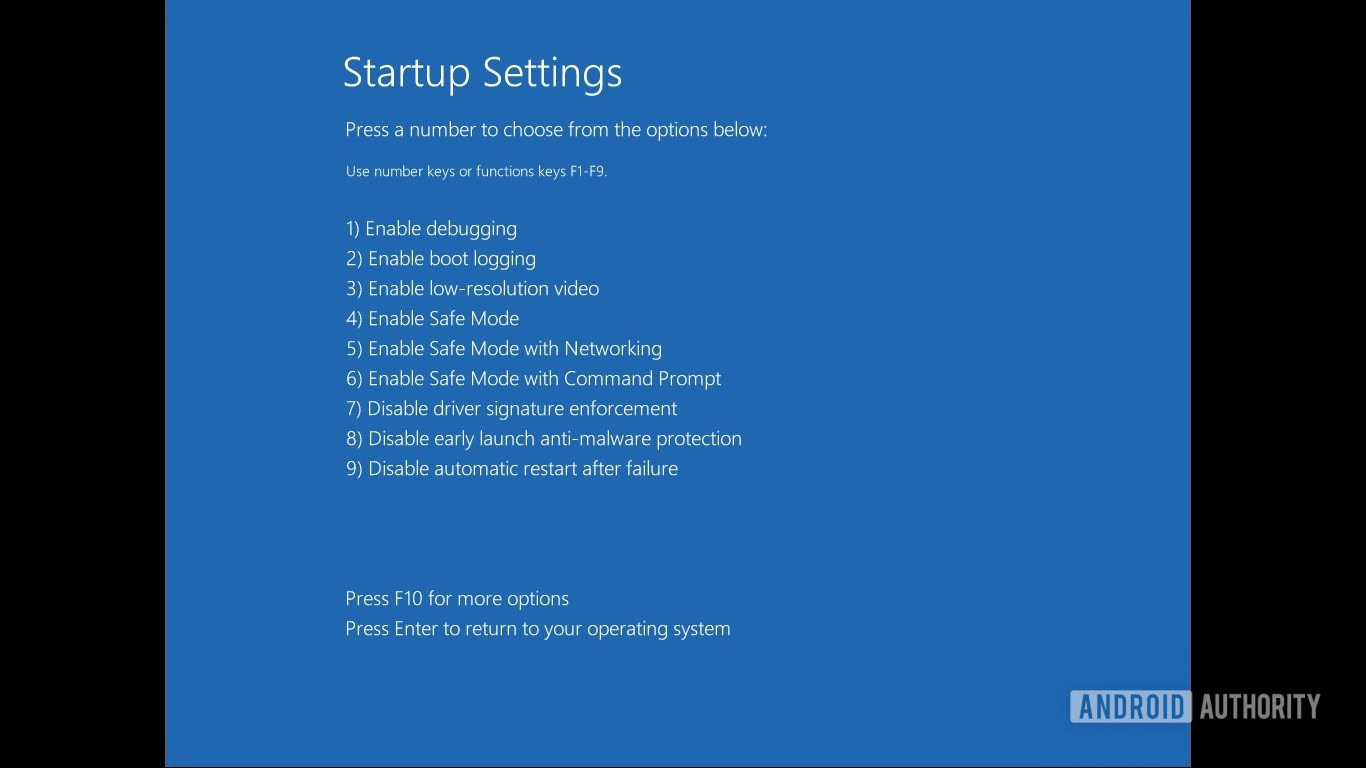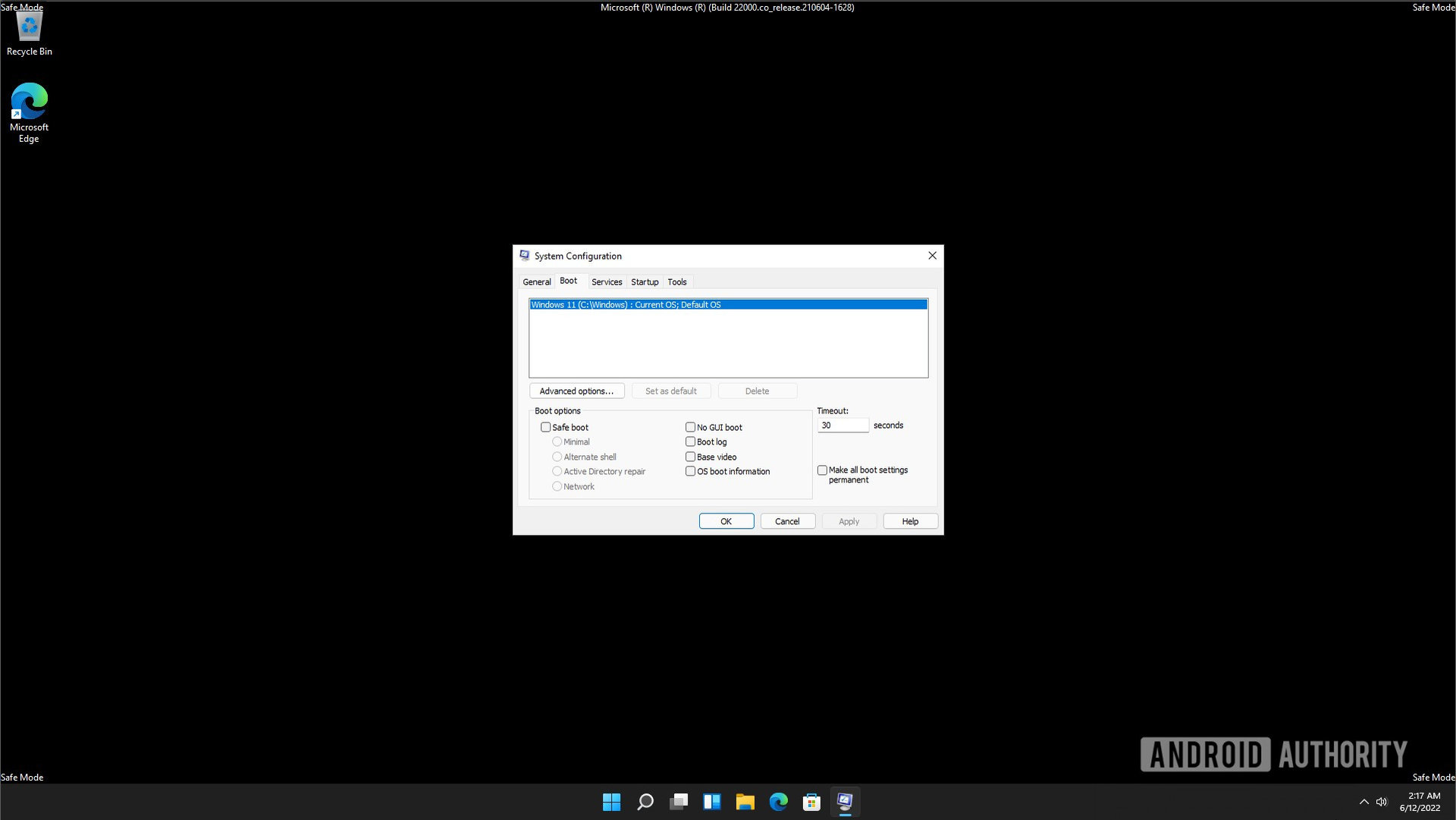Affiliate links on Android Authority may earn us a commission. Learn more.
How to boot into safe mode in Windows 11
Published onJune 14, 2023
While Windows 11 is free and likely to work fine for most folks, some systems may face issues due to the update. So what can you do if your Windows 11 PC has a problem that doesn’t let you use it properly? Well, you can try and boot into safe mode. Here’s how to boot into safe mode in Windows 11 .
QUICK ANSWER
To boot into safe mode on Windows 11, head to Windows settings -> System -> Recovery -> Advanced startup -> Restart now. After the restart, in the advanced startup boot menu, select Troubleshoot -> Advanced options -> Startup Settings -> Restart. Once restarted, press 4 to enter safe mode, 5 for safe mode with networking, or 6 for safe mode with CMD.
JUMP TO KEY SECTIONS
How to boot Windows 11 in safe mode
Head over to the Windows settings app via Windows search. You can also press Windows + I to open it.

In the left navigation pane, make sure System is selected. If it isn’t, click System. In the right pane, click Recovery. Under Recovery options, there will be a tab that says Advanced startup. Click the Restart now button. In the confirmation pop-up, click Restart now again.

Windows 11 will restart into the advanced startup with a bunch of options. From the Choose an option menu, click Troubleshoot.

On the Troubleshoot screen, click Advanced options.

Click Startup Settings from the Advanced options.

Click Restart on the Startup Settings screen, at the bottom right under the list of boot modes.

The system will restart into the startup mode selection screen. This screen lists all the boot options for Windows 11, including the three Safe Modes below.
- Press 4 to enter Safe Mode — This takes you to the basic safe mode. Most functionality, including unnecessary Windows services, networking, and even the command prompt are disabled.
- Press 5 to enter Safe Mode with Networking — This takes you to safe mode, but with internet connectivity and other networking systems enabled. We recommend this mode if you want to do the troubleshooting yourself and need internet access.
- Press 6 to enter Safe Mode with Command Prompt — This takes you to safe mode with the command prompt shell (CMD) enabled. This mode can be useful for advanced troubleshooting using the CMD.

When you press the key according to your preference, Windows 11 will restart and enter the respective safe mode.

How to exit safe mode on Windows 11
The simplest way to exit the safe mode on Windows 11 is to restart your PC. Usually, this reboots Windows 11 back into regular mode. Sometimes, however, Windows 11 may get stuck in safe mode and refuse to return to normal. In that case, follow these steps to exit safe mode on Windows 11. However, in some cases, that may not work.
Summon the Run dialog box by pressing Windows + R on your keyboard at once. In the Run dialog box, type msconfig and click OK, or hit the Enter key.

The System Configuration window will pop up. Click the Boot tab towards the top. Ensure the checkbox next to Safe boot is unchecked under Boot options. You can click to uncheck it if it’s checked. Once done, click OK.

Now restart your PC. Windows 11 should exit safe mode and kick into regular mode. If you want to go back into safe mode, follow the same steps mentioned above again. Good luck removing a virus from your PC or whatever else it is you need to do in safe mode!
What is safe mode and what is it for?

As you may already know having made it this far, safe mode is like a bare-bones state of Windows. Instead of launching every program and process that would usually load up automatically on startup, just enough crucial files and drivers are run to ensure Windows functionality.
Safe mode is most often used for diagnosing issues that a user is experiencing. If the issue doesn’t occur when Windows is launched in safe mode, it indicates that the primary system functions aren’t causing the problem. It then gives the user a platform to try and identify whether it’s a hardware driver, an application, a virus, or something else causing the issue.
Safe mode is like a bare-bones state of Windows.
As we outlined above, there are three versions of safe mode. Most users will be familiar with the first version, which is just Windows in its most basic state with no network capability. Safe mode with command prompt takes you to a command prompt line rather than the Windows interface, and directories are navigatable from there. It’s better suited to advanced users. The networking version of safe mode is like the first version, plus network and internet access. This might be handy for online troubleshooting or redownloading drivers. It can be riskier, though, as protections such as anti-virus and malware detection programs that usually keep you safe online might not be automatically running in safe mode.
Assuming safe mode runs smoothly, a user can attempt various potential fixes, rebooting back into regular Windows to see if they have worked. Examples could be removing applications that have been recently installed or scanning for malware after a download caused the problem. If you only know that the system was working fine a while ago and isn’t anymore, then a System restore might solve the issue. You could even reinstall Windows as a means of last resort. Be sure you know what you’re doing before attempting any fixes, or you could risk making matters worse.